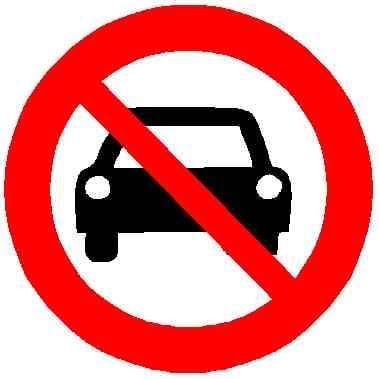A recent study of mode share (the % share of transportation trips by car, transit, walking, biking etc) relative to city size and income levels in almost 800 cities in 61 countries.
Data corresponding to 794 cities, with a combined population of almost 850 million people, is used to model the vast heterogeneities in the way people move in cities.
Some urban areas rely heavily on cars, with less than 10% of their journeys on alternative modes of transport (either walking, cycling or Public Transport), whilst in other cities, less than one in four journeys are by car. Among the 794 cities, 22.4% of the journeys are Active mobility, 26.2% are Public Transport, and 51.4% are by Car.
https://www.sciencedirect.com/science/article/pii/S0160412024001272
NYC being 75% drivers makes no sense to me. Obviously it has a lot of people driving but if you’ve ever been you’d know most locals are on the subway or their two feet for most trips
20% of people employed in NYC don’t live there. So that explains ~940,000 people who are probably driving.
13,000 vehicles in NYC are taxis. 77,000 active ride share drivers. These are used by the 176,000 daily tourists.
That brings the total number of cars in NYC largely serving people who don’t actually live there to 1.1m most days.
There are 2.1 million registered cars in NYC. That means 1:3 cars currently in the city represent people who don’t live there. That is roughly 1/3 of all cars in NYC. Likely closer to 50% or more of the actual traffic since the average NYC resident does not drive their car every day.
The European car numbers are so high that I’d guess the unit is the whole metropolitan area. Otherwise it sounds pretty bizarre that most cities would have car usage close to 75%
The data is all available in GitHub, one can relatively easily dig in to see where they got which numbers.
And they offer a bunch of visualisations too! Pretty cool study
This is almost certainly the explanation. The majority of people who live and work in the inner boroughs of NYC walk or use transit, but cars do dominate in the outer boroughs where public transit reach isn’t as ubiquitous. When you’re in eastern Queens or most places on Staten Island it often doesn’t really feel like you’re “In NYC” but you are, that’s one downside of huge metro borders.
Yeah, I know that can be an issue with comparing across countries. I know in the US we tend to count the surroundomg suburbs in these metrics, while that is less common elsewhere.
Yeah its the walking that got me. People walk a lot.
Two more images from source (tap for spoiler)


c/dataisNotbeautiful
It took me 5 minutes to identify which line aligns with which axis
This is a standard type of graph:

Loam drives more, whereas clay either walks or takes the metro?
Yours is labeled in a much clearer way.
Totally agree, the graph in my eyes is pretty clear it is the labeling that is shitty because it tries too hard to be clear. There is the letters of each point (A, B and C) which get the largest heading, but because they are only one letter long they do not appear as the main information. Then there is the description of each axis as second heading acompanied by symbols that do not really add anything, and then the discription of each point as a third heading which just float around in a random spot. Chaos.
Neat how all that data just fit nicely into a triangle too.
This is a pretty standard way of showing proportions between 3 things; it wasn’t invented for this graph specifically.
Yes, I agree, that when I got this, it does become useful
I am stuck in the hellhole known as the US and I hate cars.
This article confirms my rage, thank you lol.
In the US, walkability is a luxury. Being able to afford to live in a walkable area is expensive.
You might like Mackinac Island…
Wondering what European city that is just south of the “Dhaka” text.
How about that sub-saharan city where 90% walk everywhere, also an outlier.
It’s a shame that the source didn’t publish raw data
I’m not sure if the question “How do you travel to work?” paints a complete picture.
I live in the Netherlands, and like many fellow countrymen I commute to work by car because it is the most convenient option. But other trips I make on a daily basis are usually either on foot or by bike, and if I go somewhere in the weekend I regularly take the train.
Exactly what I was gonna point out. I travel my transit to work, but my wife uses the car just because it’s super convenient and closer. But on 50% of trips together we transit and 40% is car, and 10% is walking to our local breweries or bars.
I think this is only work data, which isn’t a great picture.
Reading through the paper, I think this is the raw data https://github.com/rafaelprietocuriel/ModalShare/blob/main/ModalShare.csv
Ugh I already have too many projects and too little free time but making that chart interactive sounds cool…
Turns out you can find interactive visualizations of the data here https://citiesmoving.com/visualizations/ 🎉
Venice?
My guess would be either London, Paris or BerlinEdit: I think I misunderstood which data point you were referring to
Latinamerican results are comparable to European best cities… surprisingly good
And they’re barely trying. Latin American countries invest most of their transportation budgets into car infrastructure, even though the minority of citizens uses it. Why? Because Latin America.
Imagine what they could do if there was any political will.
That implies that even Montreal doesn’t go below 50% car use. I honestly didn’t expect that. Everyone knows it’s dumb to try to even get a car into the island.
Drop into street view at a random intersection in Montreal and chances are you’ll be able to see more cars than people. This is sadly still true for most cities in the western world, outside of their central business districts. We don’t like to spent time in places where there are lots of cars so we bias ourselves, but most places still do have lots of cars.
Maybe with the new upcoming REM lines, car usage will decrease.






